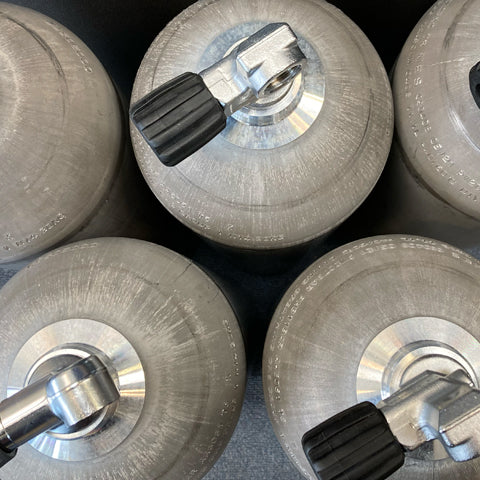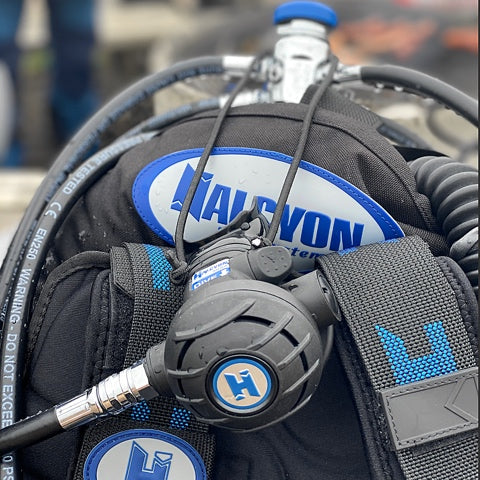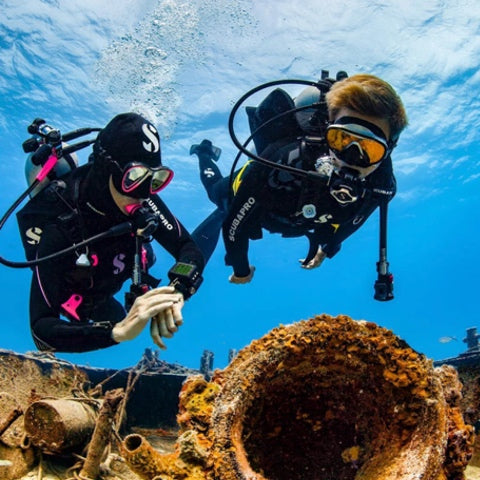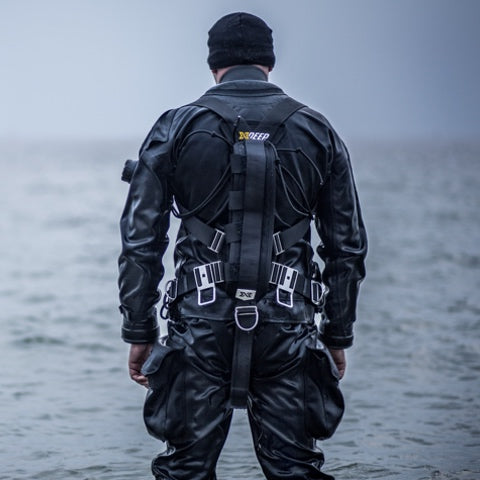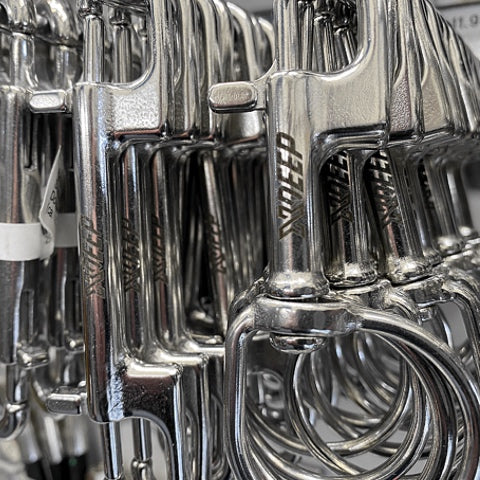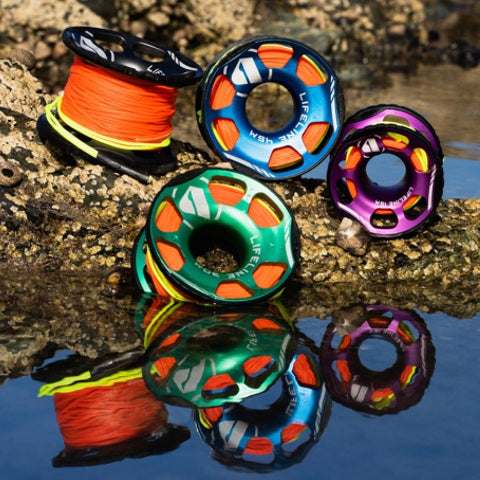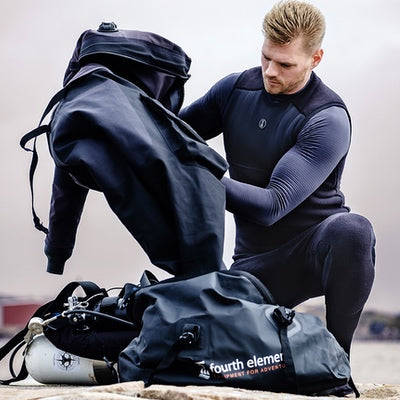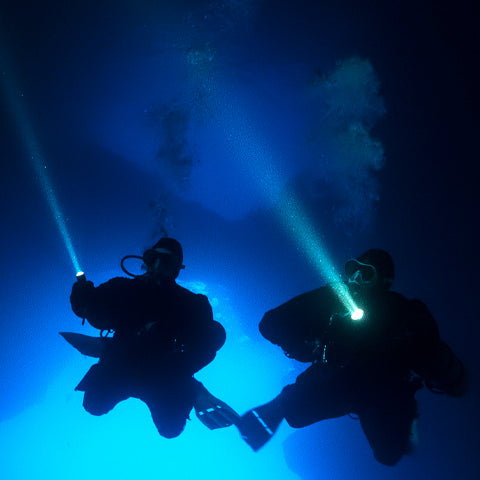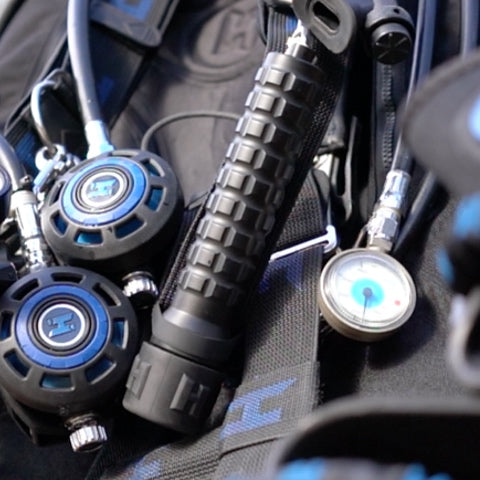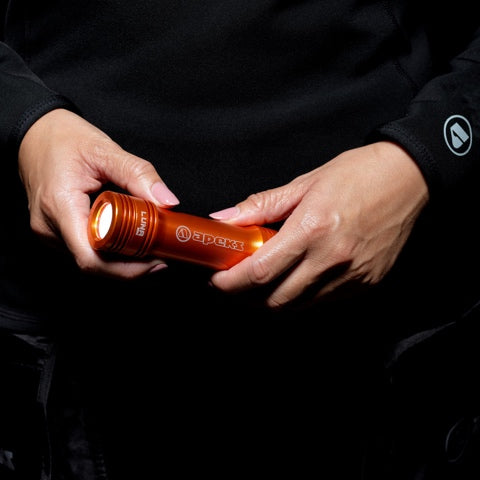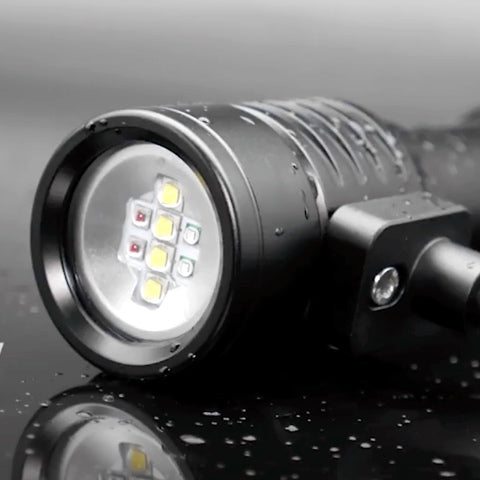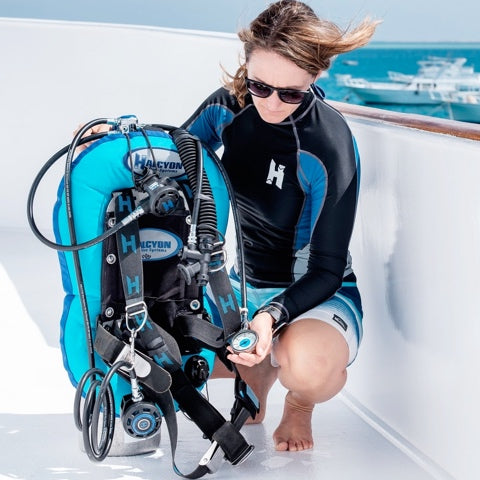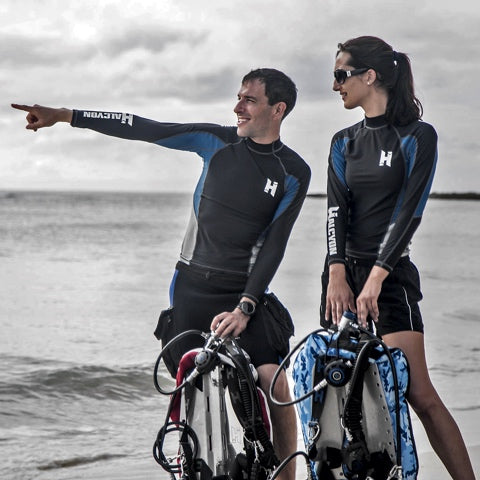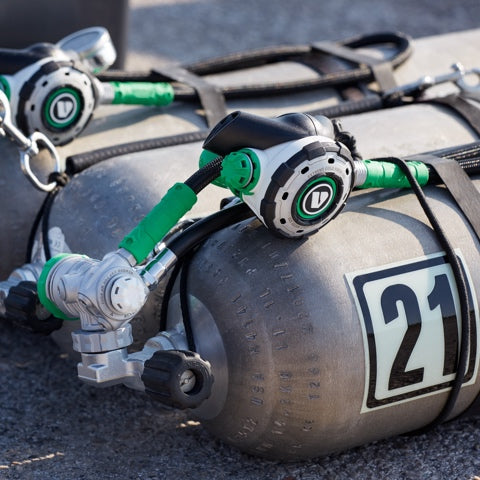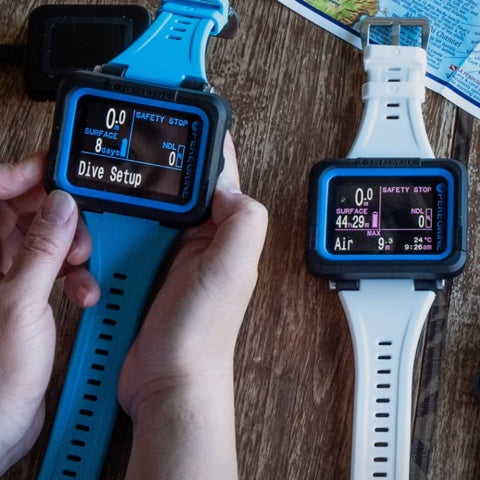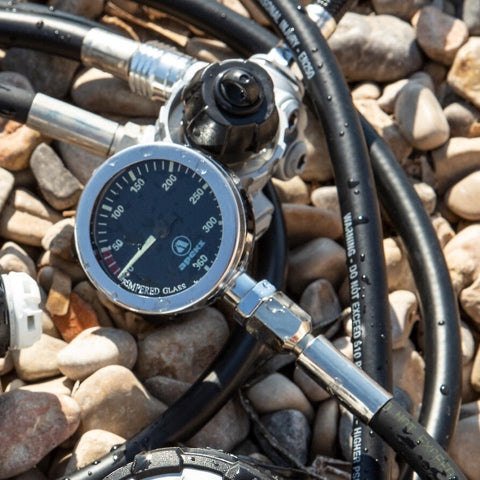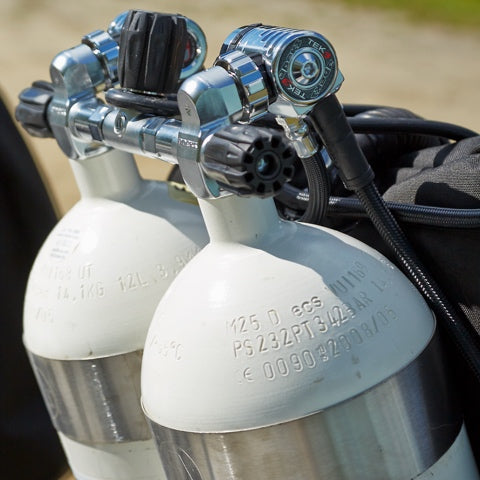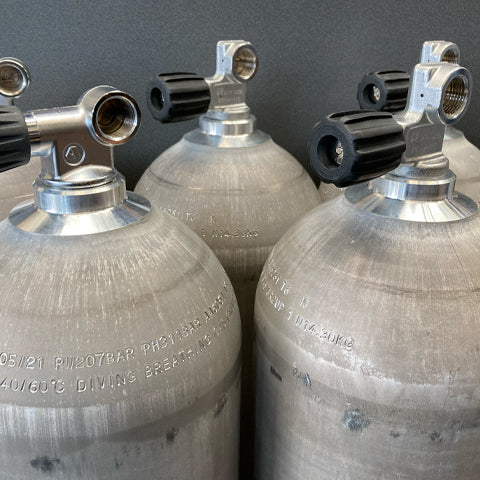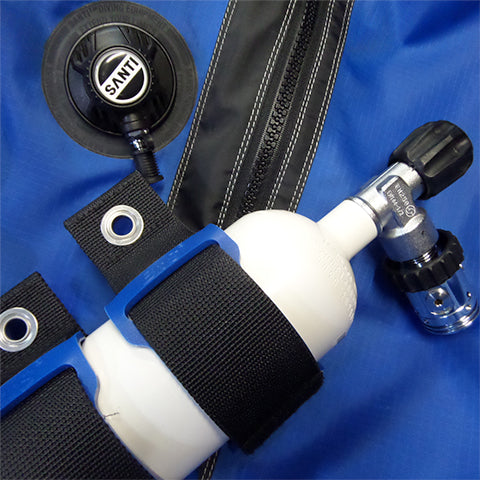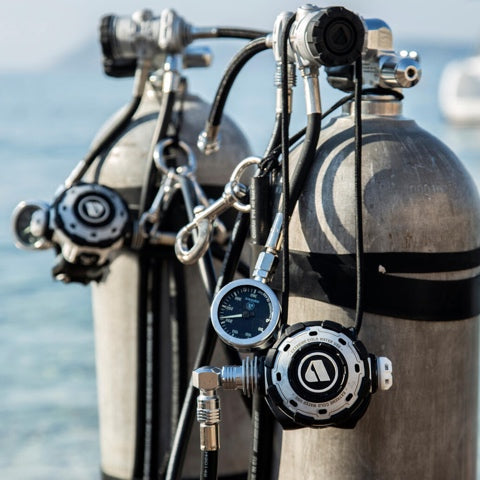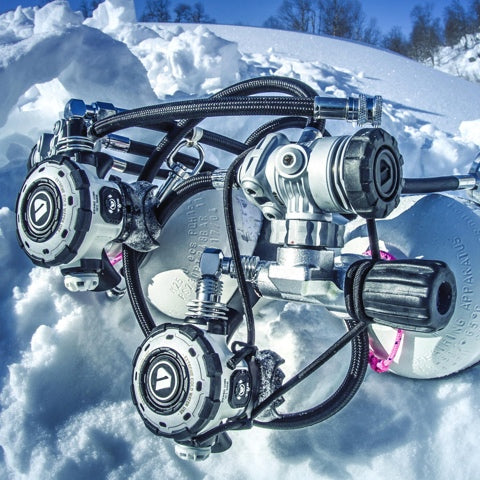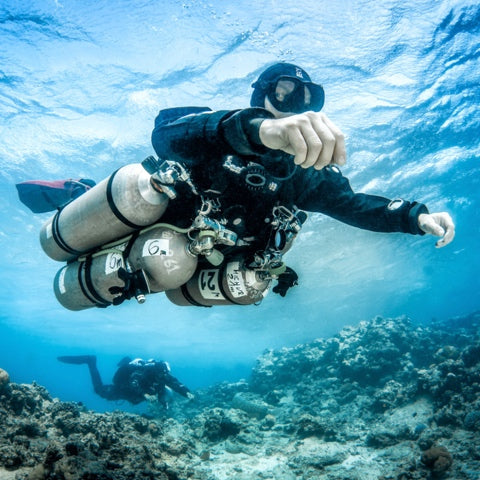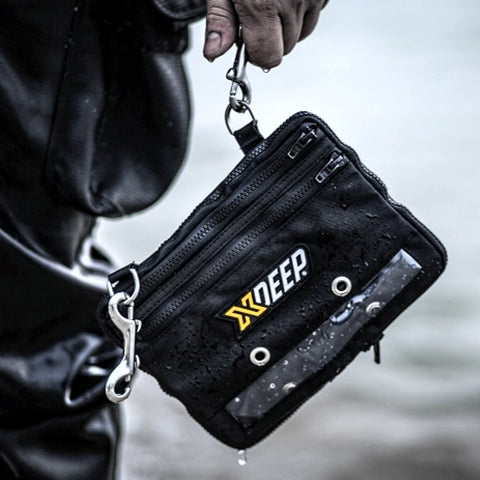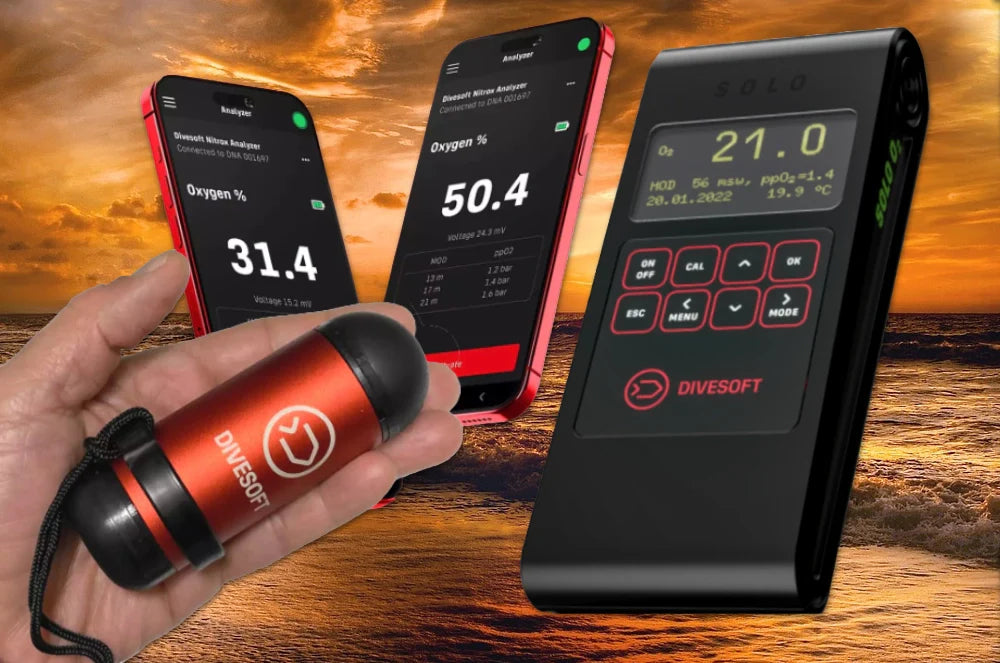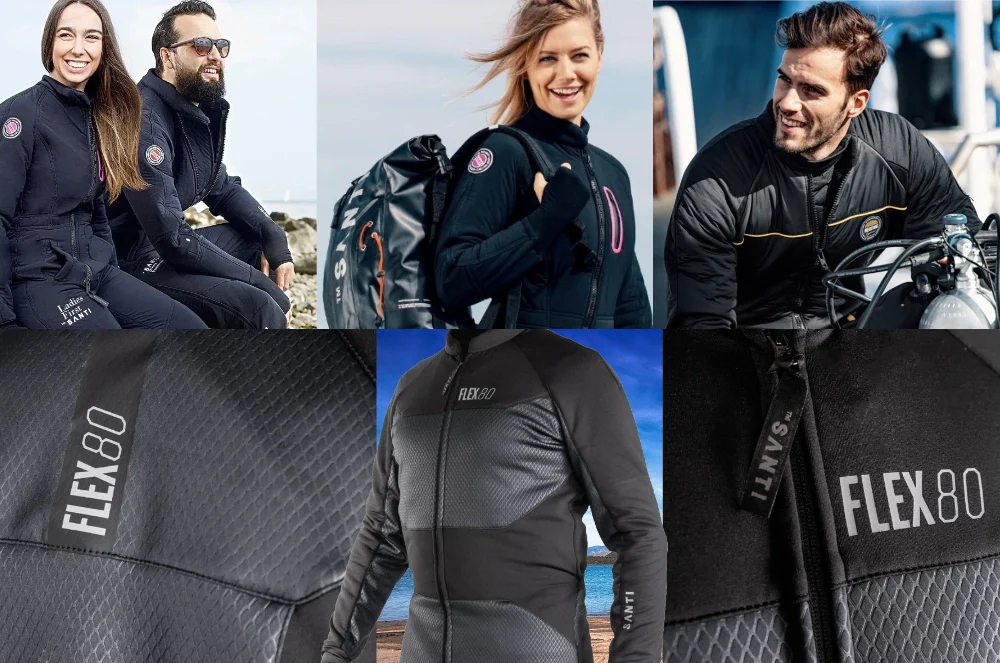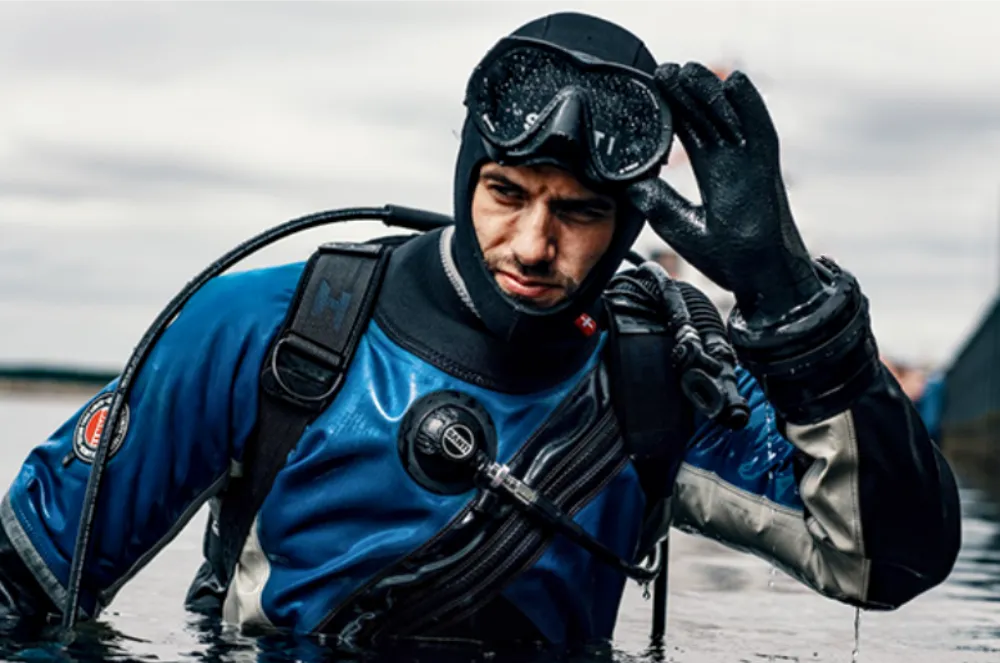Beyond the Dive Shop:
Taking Control of Your Nitrox Gas
Why should Nitrox divers have their own Nitrox Analyser? Let’s first consider why anyone would need a Nitrox analyser, given that all UK diving gas fill stations would have analysers and require you to analyse and sign out your Nitrox mix. It’s all about your safety.
Self-Reliance
Wherever you are in the UK or around the world, without your own analyser, your safety will depend solely on oxygen measurements from a device owned by someone else — likely a commercial operation, if not a club.
While UK operators will routinely calibrate their trimix and nitrox analysers and maintain them properly, there is always a remote chance of improper calibration leading to an inaccurate initial reading beyond an acceptable margin.
Having a personal analyser allows you to verify the initial reading and the content of your cylinder before a dive, thereby enhancing your dive safety. This could be particularly important if you're planning to dive nitrox at holiday destinations.

Blending Changes
Furthermore, in most cases on this side of the pond, Partial Pressure Blending will be the primary method of filling your nitrox. It involves adding a certain amount of oxygen and topping it up with air to achieve the desired mix.
But as with any fill, the filling process itself is susceptible to inaccuracies caused by temperature changes. For example, the final pressure you get when the gas has cooled will always be lower than the pressure when the cylinder is hot out of a fill.
A personal nitrox analyser (or one shared within a buddy team) helps check the gas, after it has cooled and settled, for any possible variations of the mix.
Although the mix you want and what you get shouldn’t vary too much, that too is susceptible to change, like pressure, which is why most mixed gas divers will re-analyse their mixes before a dive.
Cylinder Mix-Up
In multi-cylinder activities, whether they all belong to you or are cylinders of a group of people diving together, there is always a small risk of a cylinder being mislabelled.
By re-analysing any cylinder, you will be increasing your safety margin.

Air Top-ups
If your cylinder contains the remains of a rich Nitrox mixture and you ask for an air top-up (air fill) to avoid wasting the extra oxygen you have, it is crucial to analyse what the final mix is before diving it.
If you’ve had, say, a 36% mix for a 28m dive and came out with 90 bar in your cylinder, an air top-up to 232 bar would give you 26.8% nitrox for a deeper dive.
But are you sure that’s what’s in your tank? The only way to be certain is to analyse it. And if the fill station you use only offers air, they may not have an analyser on site.

Travel
The value of a personal analyser extends beyond the confines of a local, regulated environment. For a diver who travels, a personal analyser is an essential tool for independence and self-reliance.
In foreign environments, where local regulations may be different, language barriers may exist, and the reputation of a local fill station may be unknown, relying on a personal analyser becomes not just a matter of protocol, but a necessity for due diligence.
Similarly, on liveaboard boats or remote trips, the sole onboard analyser may be in use, or its calibration and condition may be unknown. Owning a personal device ensures a diver is never forced to compromise on safety or convenience, regardless of their location.

Queuing Up
Last but not least, whether in the UK or on a liveaboard or abroad, you’re not the only one using a fill station. There may be many people in the queue waiting for their fills, and probably only a single analyser available to confirm the mix.
By having your personal analyser you can save on time and be out there diving instead of waiting for your turn.
Owning a personal device ensures a diver is never forced to compromise on safety or convenience, regardless of their location.
So which Divesoft Nitrox Anaylser is better for you?
The Divesoft DNA Oxygen Analyser
Suppose you want a reliable, accurate, yet simple, portable, affordable, palm-sized analyser for daily use and always have your mobile phone with you. In that case, the Divesoft DNA analyser should do the job.
It’s a small, clever portable device that’s reliably accurate and extremely easy to carry and use.
With 1 to 2 years battery life on a standard CR2450 battery and an anodised aluminium body with TPU ends protecting the unit from rough handling in the field, you can even see your MOD for 1.2, 1.4 and 1.6 ppO2 for the gas you’ll be analysing.
The only downside (if you’re not a phone fan) is that using the unit depends on using the app, whether on iPhone or Android, as everything occurs within the app via Bluetooth. The advantage is that the app works offline, so you can use it anywhere, even without an internet connection. Innovative indeed!
The Divesoft SOLO O2 Analyser
If you’re not an app fan, want to see your readings directly on the analyser screen, and still want portability but at a larger size, the Divesoft SOLO O2 would likely be a better choice.
Out of the box, it initially functions as a nitrox analyser but can later be factory converted to analyse helium too, making it ideal for divers contemplating undertaking deeper, longer dives using trimix in the future.
It is not as compact as the DNA, being identical in shape and size to the Divesoft Solo Trimix Analyser, but it doesn’t require a mobile app to use and is easy to use hand-held.
The price of the DNA may seem to be nearly half that of the SOLO O2, but the gap is less when you add an Oxygen sensor to the DNA – which is an optional purchase.
At the time of this blog (August 2025), the DNA with sensor is priced at £344, whereas the SOLO O2 with sensor is £550.
The highlights of the SOLO O2 include intuitive controls, 2 onboard display screens, advanced internal software, easy automatic calibration, real-time gas calculations and even a built-in gas mixing software.
The SOLO runs on a Li-Ion battery charged with a supplied USB-C cable, which can also be used for continuous gas analysis.
As mentioned, another benefit of the SOLO is that if you choose to use diving mixes containing helium in the future, you can have your SOLO O2 upgraded by the company to include Divesoft’s solid-state helium sensor.
Then again, if that’s really where you’ll be heading, you’d probably be better off with the Divesoft SOLO Trimix Analyser , which uses an electromechanical helium sensor based on the speed of sound – meaning you’ll never need to buy expensive replacement helium sensors.
Nitrox Analysers: DNA Vs. SOLO
Choosing the right O2 analyser isn't about finding a one-size-fits-all solution; it's about matching the device to your unique diving lifestyle. The Divesoft DNA and the SOLO O2 are excellent devices, but they cater to slightly different types of divers. For the modern, tech-savvy recreational nitrox diver who values portability above all else, the Divesoft DNA Analyser is your ideal companion. It's the ultimate 'grab and go' device—sleek, compact, and seamlessly integrated with the tools you already carry.
If you're comfortable using a smartphone app for everything from navigation to dive planning, the DNA's reliance on a mobile app will feel entirely natural. Its compact size makes it easy to pack for any trip, whether it is a weekend at a local quarry or an overseas liveaboard. The ability to view your readings and even calculate your MOD on the go makes it an extremely powerful and convenient tool for the minimalist diver.
On the other hand, the Divesoft SOLO O2 Analyser is built for the purist who wants their tools to be self-contained and ready for the next level. If you prefer to see your data on a dedicated screen without having to pull out your phone, the SOLO is your analyser.
Its intuitive controls and clear display make it a straightforward choice for immediate analysis. Add to that SOLO's value of its future-proofing. For the ambitious recreational and technical diver considering a future transition to using mixed gases, the SOLO provides an upgrade path.
This makes it an astute investment, as you won't need to purchase a completely new device when your diving goals develop. The SOLO is a sturdy, independent unit designed for dependability and expandability, making it a professional choice for those who take their gas management seriously and foresee technical diving in their future.
Conclusion
Ultimately, the choice between the two comes down to personal preference and your diving trajectory.
The DNA is the perfect partner for the recreational diver who wants a simple, effective, and highly portable solution. The SOLO O2, while a bit larger and more of an initial investment, is a forward-thinking choice for the diver who wants a dedicated tool that can grow with their skills and ambitions.
Either way, owning your own analyser is a non-negotiable step toward total self-reliance and safety, and both of these Divesoft models will serve you well.
Safe Diving Everyone!


